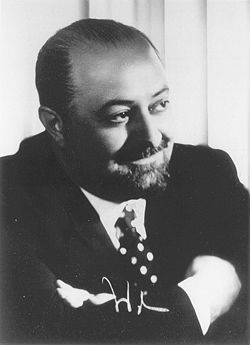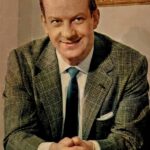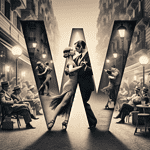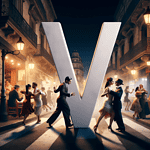Notice: Undefined index: titleWrapper in /home/853563.cloudwaysapps.com/qmzxvjpnpa/public_html/wp-content/plugins/seo-by-rank-math/includes/modules/schema/blocks/toc/class-block-toc.php on line 103
Homero Manzi: A Pillar of Argentine Tango
Table of Contents
Homero Manzi, a name synonymous with the golden age of Argentine Tango, carved an indelible mark in the cultural and artistic landscape of Argentina. Born on November 1, 1907, in Añatuya, Santiago del Estero, Manzi’s poetic prowess and his profound contribution to the tango genre have made him an iconic figure, revered by tango lovers and dancers worldwide.
Early Life and Career Beginnings
Manzi’s journey into the heart of tango began in Buenos Aires, the cradle of this passionate dance form. His early exposure to the urban landscape, the barrios, and the bohemian life of the city deeply influenced his artistic sensibilities. By the 1930s, Manzi had emerged as a significant figure in the tango scene, writing lyrics that captured the essence of the city’s soul, its people, and their stories.
Artistic Contributions and Collaborations
Manzi’s collaboration with prominent composers like Aníbal Troilo, Sebastián Piana, and Lucio Demare resulted in some of the most poignant and memorable tangos. Songs like “Sur,” “Malena,” and “Barrio de Tango” are not just music pieces; they are narratives that weave the fabric of Buenos Aires’ identity. His lyrics, characterized by deep emotion and vivid imagery, have become anthems for tango enthusiasts.
Legacy and Commemoration
Manzi’s legacy extends beyond his music. In Buenos Aires, several landmarks honor his memory, serving as pilgrimage sites for tango aficionados. Notable among these is the Homero Manzi corner in the Boedo neighborhood, a legendary spot where the spirit of his lyrics seems to echo in the streets. Additionally, the Homero Manzi Cultural Center in San Juan and Boedo stands as a testament to his enduring influence on Argentine culture.
Influence on Modern Tango
Today, Homero Manzi’s work remains a cornerstone in the world of Argentine Tango. His songs are a staple in milongas (tango dance events) around the globe. Dancers and musicians alike find a deep connection with his lyrics, resonating with the universal themes of love, longing, and nostalgia. His ability to capture the essence of the human experience makes his work timeless, bridging generations of tango lovers.
Conclusion
Homero Manzi’s profound impact on Argentine Tango is undeniable. His work transcends time and geography, continuing to inspire and move the hearts of those who step into the world of tango. As dancers glide across dance floors worldwide, Manzi’s words accompany them, a reminder of the poetic beauty that is the soul of Argentine Tango.
Homero Manzi’s Most Important Tango Songs and Popular Recordings of Homero Manzi’s Tangos for Milongas
Homero Manzi’s contribution to the tango genre is vast and significant. His collaboration with various musicians resulted in a repertoire of songs that have become classics in the world of Argentine Tango. These songs, each a gem in the crown of Argentine Tango, continue to be celebrated and performed at milongas worldwide. They not only showcase Manzi’s incredible talent as a lyricist but also reflect the soul of tango culture and the spirit of Buenos Aires.
Homero Manzi’s tangos have been recorded by numerous artists over the years, with some versions becoming particularly popular in milongas around the world. These recordings are cherished for their classic interpretations and remain integral to the tango dance scene. Here’s a list of some of these popular recordings that continue to resonate at milonga dance events:
- “Sur” by Aníbal Troilo and Francisco Fiorentino
This version stands as one of the definitive interpretations of “Sur,” capturing the quintessential melancholic and nostalgic essence of the song. Composed with Aníbal Troilo, “Sur” is often hailed as one of the greatest tangos ever written. Its evocative lyrics paint a nostalgic picture of the southern barrios of Buenos Aires, resonating deeply with those who long for the city. - “Malena” by Lucio Demare and Juan Carlos Miranda
The emotive delivery of Juan Carlos Miranda adds a profound depth to Manzi’s lyrics, making this recording a favorite among tango enthusiasts. This tango, with music by Lucio Demare, is celebrated for its poetic lyrics which tell the story of a woman named Malena. It’s renowned for its melancholic melody and profound emotional depth. - “Barrio de Tango” by Aníbal Troilo and Edmundo Rivero
Troilo’s bandoneón and Rivero’s deep voice create a haunting and memorable rendition of this classic. A collaboration with Aníbal Troilo, this song is a heartfelt ode to the Buenos Aires neighborhood, capturing the essence of the city’s tango culture. - “Milonga Sentimental” by Sebastián Piana and Hugo del Carril
This recording brings a vibrant and emotive interpretation to one of Manzi’s most famous milongas. Created with Sebastián Piana, this song is one of the defining pieces of the milonga genre, a precursor to tango with a faster rhythm. Its lyrics are reflective and deeply moving. - “El Último Organito” by Acho Manzi and Susana Rinaldi
Susana Rinaldi’s powerful interpretation adds a unique dimension to this poignant piece. A collaboration with Acho Manzi, Homero Manzi’s son, this song is notable for its poetic portrayal of urban landscapes and the passage of time. - “Che Bandoneón” by Aníbal Troilo
A pure instrumental version, Troilo’s mastery over the bandoneón brings this tribute to life in a deeply moving way. Teaming up again with Aníbal Troilo, this piece is a tribute to the bandoneón, a key instrument in tango music. The song expresses the deep emotions evoked by the instrument’s sound. - “Una Canción” by Lucio Demare and Raúl Berón
Berón’s smooth vocals complement the romantic and lyrical nature of this beautiful tango. A collaboration with Lucio Demare, this song stands out for its romantic and lyrical quality, capturing the essence of love and longing in tango. - “Ninguna” by Lucio Demare
This version often stands out in milongas for its classic arrangement and emotional delivery. Composed with Lucio Demare, “Ninguna” is known for its emotive lyrics, expressing deep feelings of love and heartache. - “Romance de Barrio” by Aníbal Troilo and Floreal Ruiz
This rendition is particularly popular for its rhythmic waltz tempo, ideal for dancers. This song, a collaboration with Aníbal Troilo, is a tango vals (tango waltz), known for its romantic and nostalgic tone, evoking the old neighborhoods of Buenos Aires. - “Patio Mío” by Francisco Canaro
Canaro’s orchestra brings a unique flavor to this nostalgic piece, making it a favorite in dance halls. Teaming up with Cátulo Castillo, this piece is a tender evocation of childhood and the passage of time, set against the backdrop of a Buenos Aires patio.
These recordings capture the essence of Manzi’s work and continue to be a vital part of the repertoire at milongas globally. They not only honor his legacy but also serve as a bridge connecting generations of tango dancers and aficionados.
Homero Manzi was a prominent Argentine Tango artist who made significant contributions to the genre through his poetry, lyrics, and compositions. Born in Añatuya, Santiago del Estero, in 1907, Manzi moved to Buenos Aires in his early years and became involved in the cultural scene of the city. He started his career as a journalist, but his passion for tango led him to write lyrics for some of the most famous tango songs of all time.
Manzi’s artistic work was closely related to the neighborhoods of Buenos Aires, where he lived and worked. He was particularly fond of the neighborhood of Boedo, which inspired many of his compositions. In recognition of his contribution to Argentine culture, several streets, schools, and cultural centers have been named after him in different parts of the country.
Homero Manzi’s works continue to be relevant today, and his music is still played at milongas (tango dance events) around the world. His lyrics and poetry capture the essence of the Argentine spirit and the emotions of the tango dance. His songs are known for their melancholic and nostalgic tone, which is a hallmark of the genre.
The Life and Times of Homero Manzi
Homero Manzi was born in 1907 in Añatuya, Santiago del Estero, and moved to Buenos Aires at a young age. He began his career as a journalist, but his passion for tango led him to start writing lyrics for some of the most famous tango songs of all time. Manzi’s artistic work was closely related to the neighborhoods of Buenos Aires, where he lived and worked. He was particularly fond of the neighborhood of Boedo, which inspired many of his compositions.
Manzi’s relationships with other prominent tango artists of the time were also important to his career. He worked closely with Aníbal Troilo, one of the most famous tango musicians of all time, and the two collaborated on several songs. Manzi also had a close relationship with Carlos Gardel, another iconic figure in the world of Argentine Tango.
Uncovering the Genius of Homero Manzi
Homero Manzi’s unique style and approach to tango music set him apart from other artists of his time. His lyrics and poetry captured the essence of the Argentine spirit and the emotions of the tango dance, making him one of the most important artists in the history of the genre. Manzi’s influence on other tango artists and the genre as a whole cannot be overstated.
Homero Manzi
The geographic locations that inspired Homero Manzi’s work are an important part of his legacy. The Boedo neighborhood of Buenos Aires, where he lived and worked, was particularly significant to him. The cultural significance of these locations in relation to Argentine Tango cannot be overstated.
Homero Manzi’s legacy continues to inspire new generations of tango lovers and dancers around the world. His music and poetry capture the essence of the Argentine spirit and the emotions of the tango dance, making him one of the most important artists in the history of the genre.
Exploring the Rich Heritage of Homero Manzi
Homero Manzi’s contribution to Argentine culture has been widely recognized, and many people have expressed their admiration for his work. As the writer Jorge Luis Borges once said, Homero Manzi was a poet who wrote in the language of the people, and his songs are still sung today because they express the feelings of the Argentine people.
Ten Popular Tango Songs Related to Homero Manzi
Here are ten popular tango songs that Homero Manzi is related to:
- Sur – A classic tango that expresses the longing for the southern neighborhoods of Buenos Aires. Popular recording: Aníbal Troilo Orchestra, Roberto Goyeneche singer (1952).
- Malena – A tribute to a woman named Malena, who embodies the essence of the tango dance. Popular recording: Lucio Demare Orchestra, Raúl Berón singer (1942).
- Barrio de Tango – A nostalgic tribute to the Boedo neighborhood, where Manzi lived. Popular recording: Osvaldo Pugliese Orchestra, Roberto Chanel singer (1949).
- El Último Café – A song about a café where people go to forget their sorrows. Popular recording: Aníbal Troilo Orchestra, Floreal Ruiz singer (1956).
- Milonga Sentimental – A milonga (a faster-paced tango) that tells the story of a lost love. Popular recording: Carlos Gardel (1932).
- Viejo Ciego – A tribute to a blind man who used to play the guitar in the streets of Buenos Aires. Popular recording: Osvaldo Pugliese Orchestra, Roberto Chanel singer (1948).
- Che Bandoneón – A song about the bandoneón (the accordion-like instrument that is central to tango music). Popular recording: Aníbal Troilo Orchestra, Floreal Ruiz singer (1949).
- Romance de Barrio – A romantic song that tells the story of a couple in love. Popular recording: Carlos Gardel (1933).
- Milonga del 900 – A milonga that captures the essence of the tango dance in the early 1900s. Popular recording: Francisco Canaro Orchestra, Ada Falcón singer (1934).
- La Casa del Tango – A song about a tango club where people go to dance and forget their problems. Popular recording: Osvaldo Pugliese Orchestra, Roberto Chanel singer (1950).
Homero Manzi’s Impact on Argentine Culture
Homero Manzi’s contribution to Argentine culture has been widely recognized, and many people have expressed their admiration for his work. His impact on Argentine culture and identity, as well as his influence on other artists in the country, cannot be overstated.
Conclusion
Homero Manzi’s legacy continues to inspire new generations of tango lovers and dancers around the world. His music and poetry capture the essence of the Argentine spirit and the emotions of the tango dance, making him one of the most important artists in the history of the genre. His contributions to Argentine culture will be remembered for generations to come.






